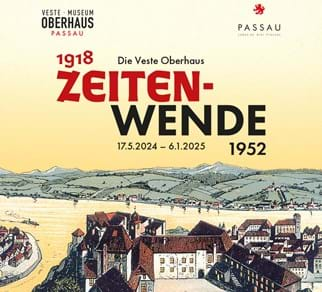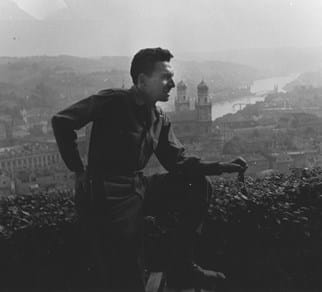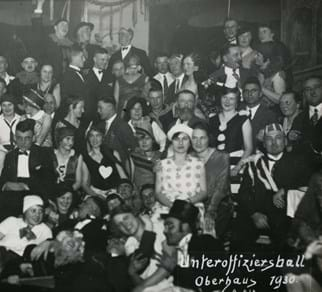Turning points. Veste Oberhaus from 1918 to 1952
17 May 2024 - 6 January 2025
This year‘s special exhibition traces the transformation of Veste Oberhaus from a Bavarian military prison into a museum – and also examines the history of the founding of today‘s Oberhausmuseum during the Nazi era. Hitherto unknown, partly unpublished photographs and archival sources show the turbulent history of Veste Oberhaus from the Weimar Republic to National Socialism and the period immediately after the Second World War. The many turning points in the history of the fortress between 1918 and 1952 also reflect the turbulent history of 20th-century Bavaria.
Farewell 1918-1920
The revolution of November 1918 not only sweeps away Kaiser Wilhelm II and King Ludwig III of Bavaria, it also marks the end of the Kingdom of Bavaria’s military prison in Passau. The exhibition takes a look behind the prison walls and describes what everyday life was like there.
Continuity 1920-1931
Even after the prison is closed, Veste Oberhaus remains in military use as a barracks. An architectural tour tells the story of how the rooms were used and what life was like for the soldiers. The first major turning point occurs when Veste Oberhaus is purchased by the city of Passau.
On the brink 1932-1944
In 1932, the city of Passau establishes the Ostmarkmuseum at Veste Oberhaus. The ceremonial opening of the museum in May 1933 coincides with the beginning of Nazi rule. In the following years, the Nazis pursue a plan to transform Veste Oberhaus and the museum into a leading National Socialist cultural institution.
Scars 1944-1950
The exhibition is the first to describe the events of the last year of the war, including the dramatic final days and the looting of the museum‘s collections. After the war, Veste Oberhaus is used
by the US Army as a „Rest Center“ and „GI‘s dream“, and then as an isolation hospital for tuberculosis and venereal disease.
A new start 1950-1952
The early years of Germany’s “economic miracle” are also a new start for Veste Oberhaus. The people of Passau make big plans for the future of their fortress and are not deterred by the need to renovate the historic building. Today‘s Oberhausmuseum opens in 1952.
 Oberhausmuseum Passau
Oberhausmuseum Passau
 Oberhausmuseum Passau
Oberhausmuseum Passau





